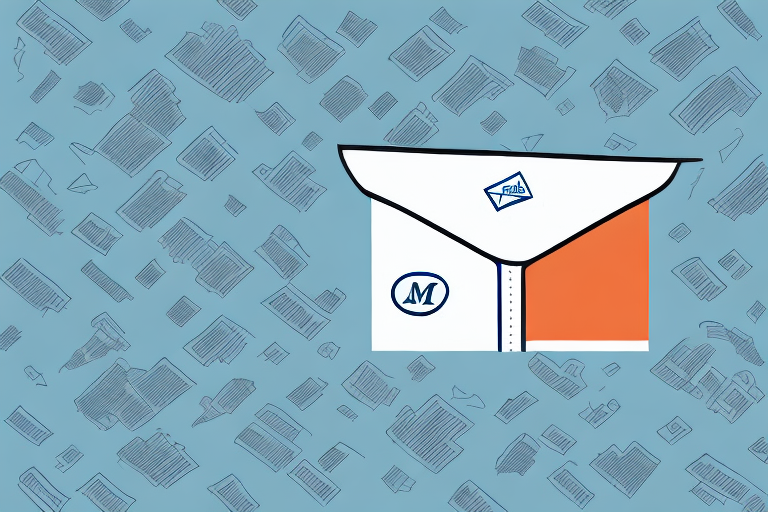Understanding USPS Priority Mail
When shipping packages or important documents, choosing the right service is crucial to ensure timely and secure delivery. USPS Priority Mail is a popular shipping option offered by the United States Postal Service, providing expedited services for both domestic and international shipments. Pricing for Priority Mail is based on factors such as package weight, destination distance, and the selected service level.
Key features of Priority Mail include:
- Expedited Shipping: Typically delivers within 1-3 business days within the U.S.
- Tracking: Free package tracking to monitor your shipment's progress.
- Free Package Pickup: Convenient pickup services from your location.
- Free Forwarding and Return Services: Ideal for correcting delivery issues or returning packages.
One of the standout features of Priority Mail is the inclusion of shipping insurance, providing an added layer of protection for your valuable items.
The Importance of Shipping Insurance
Shipping insurance is essential for safeguarding the value of your packages and ensuring financial security in case of unforeseen events such as loss, damage, or theft during transit. Without adequate insurance, you may face significant out-of-pocket expenses to replace lost or damaged items.
According to the USPS Office of Inspector General, millions of packages are shipped annually, and a small percentage may encounter issues during transit. Investing in shipping insurance helps mitigate potential losses and provides peace of mind for both senders and recipients.
Additionally, shipping insurance can streamline the claims process, enabling faster compensation compared to relying solely on the carrier's limited liability coverage.
Priority Mail Insurance Coverage
Included Insurance
By default, USPS Priority Mail includes insurance coverage up to $50 for loss or damage of the package and its contents. This coverage extends to both merchandise and non-merchandise items, making it suitable for a variety of shipping needs.
Additional Insurance Options
If the value of your items exceeds the included $50, you can purchase additional insurance. USPS allows you to insure packages for up to $5,000 in declared value, providing comprehensive protection for high-value shipments.
To add extra insurance, you can:
- Visit your local post office and request additional coverage.
- Add insurance online when preparing your shipment through the USPS website.
Limitations and Exclusions
While Priority Mail insurance offers valuable protection, it's essential to understand its limitations and exclusions to ensure your items are fully covered:
- Eligible Items: Most merchandise and documents are covered, including jewelry, electronics, and important paperwork.
- Excluded Items: Certain items are not eligible for insurance, such as alcoholic beverages, hazardous materials, perishable goods, live animals, and cash.
- International Shipments: Insurance coverage for international Priority Mail may vary based on the destination country’s regulations.
- Improper Packaging: Damage resulting from inadequate packaging may not be covered.
- Prohibited Content: Items that violate USPS regulations are excluded from coverage.
For a comprehensive list of exclusions, refer to the USPS Domestic Mail Manual.
Filing a Claim for a Lost or Damaged Package
In the unfortunate event that your Priority Mail package is lost or damaged, filing a claim promptly is crucial to receiving compensation. Here’s how to navigate the claims process:
Steps to File a Claim
- Gather Documentation: Collect all relevant information, including the receipt, tracking number, and any evidence of damage.
- Submit the Claim: Claims can be filed online through the USPS Claims Center or by visiting your local post office.
- Provide Detailed Information: Clearly describe the issue and provide supporting documentation to expedite the process.
- Await Resolution: The USPS typically processes claims within 7-10 business days, depending on the complexity.
Claim Approval
If your claim is approved, you will receive reimbursement based on the declared value and the level of coverage purchased. Ensure that all information provided is accurate to avoid delays or denials.
In cases where a claim is denied, you have the option to appeal the decision by providing additional documentation or seeking legal advice.
Tips for Insuring Your Priority Mail Package
To maximize the effectiveness of your Priority Mail insurance, consider the following best practices:
- Accurate Valuation: Declare the correct value of your items to ensure appropriate coverage.
- Proper Packaging: Use sturdy and appropriate packaging materials to prevent damage during transit.
- Clear Labeling: Ensure that the package is correctly labeled with accurate addresses to avoid delivery issues.
- Track Your Shipment: Utilize the free tracking services to monitor your package’s status in real-time.
- Understand Restrictions: Familiarize yourself with USPS restrictions and prohibited items to ensure compliance.
Additionally, always keep receipts and documentation related to the shipment and insurance, as they are essential when filing a claim.
Alternatives to Priority Mail Insurance
If USPS Priority Mail insurance does not meet your specific shipping needs, there are alternative options available:
Private Shipping Insurance Providers
Companies like UPS and FedEx offer their own insurance options, which may provide higher coverage limits or different terms that better suit your requirements.
Third-Party Insurance Services
Specialized insurance providers offer coverage that can be added to any shipment, often with customizable options to fit unique shipping scenarios.
Credit Card Benefits
Some credit cards offer shipping insurance as a benefit when you use the card to pay for postage. Check with your credit card issuer to understand the extent of coverage and how to activate it.
Comparing Options
When considering alternatives, compare the coverage limits, costs, and terms to ensure you select the best option for your shipping needs. Always read the fine print to understand any exclusions or limitations that may apply.
Conclusion
USPS Priority Mail provides a reliable and expedited shipping option with the added benefit of included insurance coverage up to $50. For higher-value shipments, additional insurance can be purchased to offer comprehensive protection up to $5,000. Understanding the nuances of Priority Mail insurance, including coverage limits and exclusions, is essential for ensuring your packages are adequately protected.
By following best practices for insuring your packages and considering alternative insurance options when necessary, you can enhance the security and reliability of your shipments. Always stay informed about USPS policies and utilize available resources to manage your shipping needs effectively.
For more detailed information on USPS services and insurance options, visit the official USPS website.




















